A photographic dichotomy
Two natives capture what they love about life

 Two natives capture what they love about life
Two natives capture what they love about life
By Carrie Scozzaro
What do babies and backcountry skiing have in common? Plenty if you’re photographers Staci Bailey and Patrick Orton. They share a love for living in Sandpoint, an appreciation for Canon’s 5D Mark III camera and a desire to share their passion with the world.
Bailey, 36, a married mother of two, revels in photographing newborn babies bathed in natural light and the gentle stillness of her studio, while Orton, 24, lives for the thrill of the hill, camera in one hand and skis in another – when he’s not snowmobiling, wakeboarding, or rappelling off a cliff. Here are their stories.

Photo by Staci Bailey
STACI BAILEY
Accidentally in love
Bailey fell into photography more than eight years ago after the birth of son Owen, followed two years later by daughter Bella. Armed with a mother’s love for her children, a point-and-shoot camera and the support of husband Ryan – he owns Bailey’s Plumbing – Staci Bailey set out to capture the fleeting moments of her children’s early years.
“It wasn’t about just taking a photo,” said Bailey. “It was about freezing time and documenting all of their tiny details. Their chubby fingers, their long eyelashes, the fun they have while doing art projects, the messes they made and the joy they got out of those messes, watching them learn, all of it!”
But Bailey also saw business potential in being able to share her baby-love with other parents. “I started with (child) photography,” she said, “but gradually migrated to newborns and babies as my own got older.”
Eager to learn, Bailey honed her skills through practice, workshops and researching other photographers. She took classes from California-based “Baby as Art” photographers Carrie Sandoval and Brittany Woodall, featured in such publications as The New York Times and renowned for their use of props to create intimate newborn portraits. It’s an approach pioneered by Anne Geddes, known for her whimsical portraits of babies and expectant parents.
“Being a mom myself has helped me be able to handle the babies with confidence,” said Bailey. “I treat all of them as if they were my own.”
A typical photo shoot, explains Bailey, involves gently posing the babies in natural light settings, most often indoors. Photographing against a neutral background with a short depth of field to blur the background, Bailey enhances the drama through the use of props: a shell-like swing, a vintage wicker baby carriage or tin bucket, a fur-lined drawer, a shelf shaped like a crescent moon complete with dangling star.
Fabric, color and texture are essential tools for Bailey, who makes many of the hats and headbands she uses in her photos. She also calls on family members – mom Cindy Derr of Spokane-based Knit Nan Knit and sister Jennifer Derr’s Modern Rag Quilts based in San Jose, Calif. – to provide a range of fabrics, blankets and ridiculously cute accessories.
Bailey uses her Canon Mark III camera body and a 50 mm lens to capture every detail, occasionally doing after-image touch-ups, such as reducing blemishes on otherwise perfect, little faces.
“I like clean, crisp and clear images, so the least amount of editing the better,” said Bailey, who will occasionally digitally merge two photos, such as trickier outdoor shots.
The least exciting part of the job, says Bailey, is paperwork. A fourth-generation Clark Fork/Sandpoint native, Bailey (née Derr) parlayed her volleyball skills into a scholarship at University of Southern Colorado (now called Colorado State) where she earned a bachelor’s degree in finance in 1998.
“It really is quite funny that I have the financial background that I do as I loved that type of work once upon a time, but now that my creative side has kicked in, paperwork is on my ‘chore’ list,” Bailey said.
What she loves, says Bailey, is continuing to learn and experiment.
“I miss everything ‘baby’ about my kids,” said Bailey, “and find so much joy in getting to interact with newborns and their parents. There is something so magical about that time frame.”

PATRICK ORTON
Living the dream
“Photography allows me to follow my passion,” said Patrick Orton, who wants to inspire others to live their life to its fullest. “My favorite part is getting to experience amazing adventures with my best friends.”
Adventures with friends was a process that started early for the Sagle native. “In the summers we would jump off cliffs at Green Bay, go wakeboarding along the edge of the Green Monarchs, and hike deep into the Selkirks and Cabinets,” said Orton, who spent winters snowmobiling and skiing the backcountry.
Although he had been skiing since age 5, it wasn’t until age 16 that it became somewhat of an addiction, admits Orton. But it was a healthy addiction, one that turned him on to photography when Orton’s mother, Kristina, asked well-known local photographer Chris Guibert to take photos of Patrick while skiing.
“I fell in love with the lifestyle of photography before I started shooting,” said Orton. “At 17, I purchased my first dSLR (camera) and Chris lent me two lenses to use until I bought my own.” Orton shot countless images, finding an outlet for his energy and creativity that combined outdoor adventure, friendship and travel.
“Not much has changed,” said Orton, who has been featured in such national publications as Rock and Ice and Powder magazines, “but now we jump off bigger cliffs and go to more remote areas to explore.”
He went to Thailand, for example, where he photographed a BASE (buildings, antennas, spans, earth) jumper falling from a 460-foot wall for Outside magazine. For the shot, Orton climbed four pitches up a 5.11 route to position himself under the diver; captured Chris Bevins’ astonishing, midair nosedive; and then rappelled back down the mountain. In Vail, Colo., Orton’s photograph of a snowboarder catapulting over an ice waterfall cliff is now frozen in time on the pages of National Geographic Adventure’s “Adventure Town” series.
Vail holds special meaning for Orton, who graduated in nearby Glenwood Springs where he earned his professional photography degree at Colorado Mountain College (Guibert’s alma mater). It was a rigorous program and a turning point in his career.
“We started with 55 kids and I graduated with 6,” said Orton. “Most of the kids thought photography would be easy. They had no passion, and it showed in their work.” His passion caught the eye of Vail Resorts’ director of photography, Jack Affleck, who offered Orton a job photographing the mountain.
Eventually Orton returned home to Sagle, where he worked two summers with Woods Wheatcroft, another nationally known local photographer. He also embarked on a three-year project with mother Kristina and father George Orton to build Starfire Cabin in Sagle, a rentable retreat.
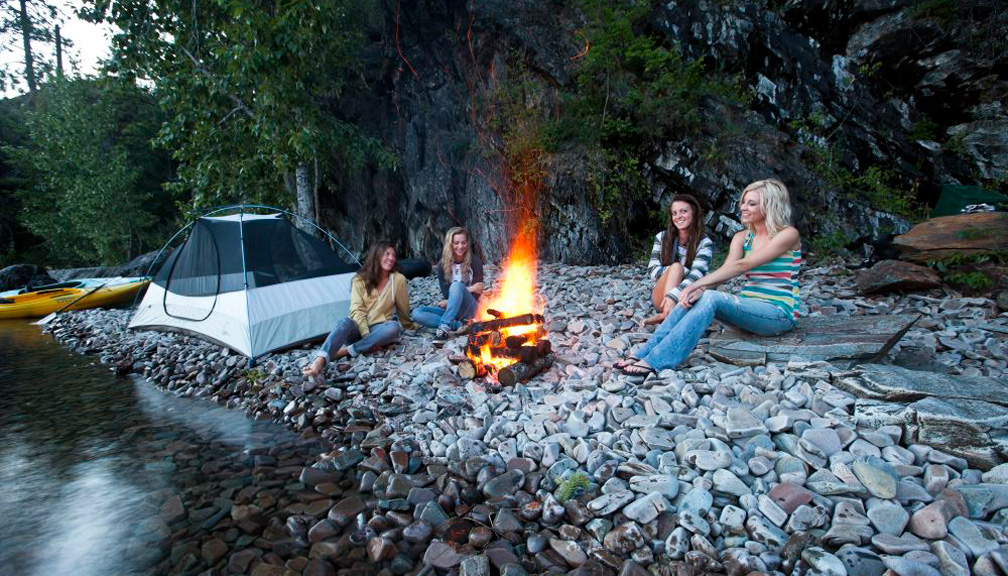
Constructed of native materials – walls from local logs, the hearth chiseled from Green Bay rock slabs, a fireplace from Hope’s Lightning Creek – Starfire is a sanctuary on 40 acres surrounded by organic gardens, aspen and cedar trees and a pond. It also features a three-mile downhill mountain bike course Orton spent four years building.
As busy as he is – he recently hired an assistant and has gotten into both video and writing about his adventures – Orton has little time to ride his own bike course. He only spends about four months of the year in Sandpoint. “Out of all the places I have seen in the world,” said Orton, “Sandpoint is my favorite. The beauty is unparalleled and it has such a friendly community.”
Although most of what he shoots is adventure, Orton’s portfolio (www.patrickortonphotography.com) shows broad ability and reflects a thoughtful appreciation for nature and portraiture. In the yoga section, he includes a black-and-white image of a yogi atop a crag in standing bow pose with a mountain goat grazing casually nearby. In the portraiture section, a pretty brunette blows snow at the viewer, her impish character framed in a halo of soft, white light. And even in the adventure category, he captures the quiet moment, such as a couple paddling away from a campsite, a silvery purple silhouette contrasting with the orange embers of the campfire.
“I love capturing a moment in time that wows people,” said Orton. “Images are a way to show the world your unique, focused view. They give people a window into my world of adventure and travel – a way for me to inspire others to live their lives to the fullest.”

Making the town tick
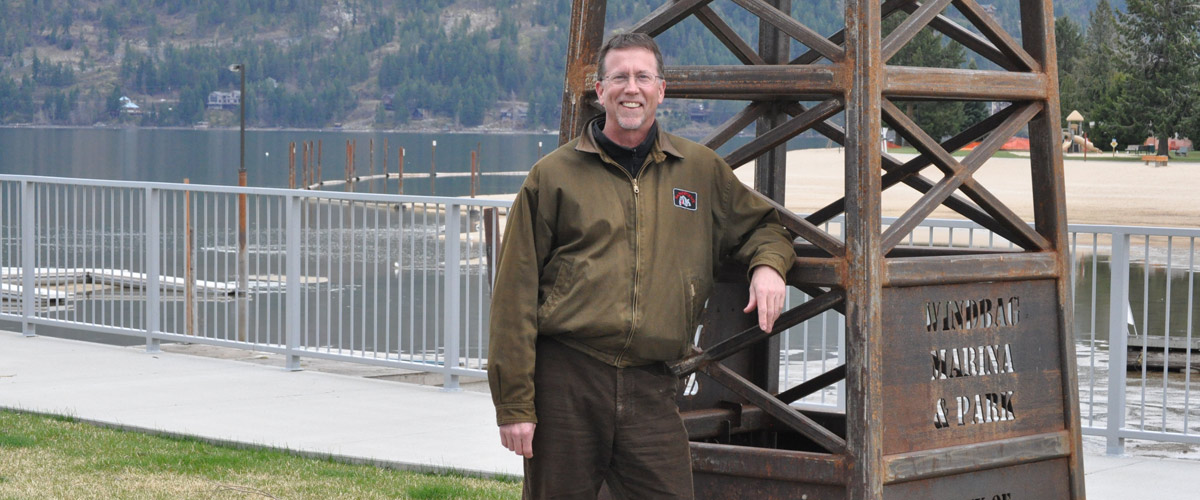
Eric Paull and one of his favorite SURA projects, the Windbag Marina & Park
Eric Paull, SURA chairman
Story and photo by Billie Jean Gerke
Have you noticed the face of downtown changing in recent years? It would be hard not to, but you may not recognize the man who heads up the organization behind many of those improvements. Eric Paull, 53, is an Idaho native who works by day at Washington Trust Bank as a vice president of corporate banking. His other passion is heading up the Sandpoint Urban Renewal Agency (SURA), which receives funding via tax increment to funnel into critical, public infrastructure and improvements in the city of Sandpoint.
“Sometimes in my industry you can’t see what you do. Even if I make a loan, I don’t often see the results. But (with SURA) when I do hardscape and infrastructure, for example on Second, you can see it. I like that part of it and the excitement it brings,” Paull said.
With his business sense and financial background, Paull emphasizes the stewardship end of his involvement with urban renewal by choosing projects for the right reasons. He takes a conservative approach and makes sure projects pencil out.
Paull’s favorite SURA projects are the Sand Creek boardwalk extension north of Bridge Street, the Dock Street/Windbag Marina renovation, redesigning Second Avenue, and making improvements to Sandpoint’s historic Panida Theater.
“That’s an icon, so it was fun to help that building,” he said.
A determined man, Paull credits a hardscrabble childhood in Lewiston, where he was raised by a single mom of four children. His mom and German grandparents showed him the value of hard work and self-motivation. “I didn’t have a lot of the privileges my friends had,” he said.
The 6-foot, 2-incher played basketball in high school and worked part-time at a bank, where he continued to work while attending college. He graduated from Lewis Clark State College with a Bachelor of Science in business administration and began a full-time career in banking in 1982. Later, he graduated from the Pacific Coast Banking School. In 1995, he moved from Coeur d’Alene to Sandpoint when he transferred with First Security Bank.
He had skied at Schweitzer when he was growing up and always liked the town. He still enjoys skiing and gives back to Schweitzer and people who ski by volunteering as a mountain host.
“I don’t show them my secret stashes though,” he said, grinning.
He and his wife, Lisa, enjoy raising their two sons, Bridger, 20, and Carson, 17, and going out on the lake along with other outdoor pursuits, such as mountain biking and hiking. Paull also enjoys gardening, fishing and cooking.
Besides chairing SURA, Paull is a member of the Sandpoint Rotary Club, a board member of the Kootenai-Ponderay Sewer District, an advisory board member of the Festival at Sandpoint and a board member of the Bonner County Economic Development Corporation.
In all, he volunteers an average of five to seven hours a week. “You have to learn to be efficient with your time,” he said.
Indeed, as a professional with a family and a dizzying amount of volunteer duties, Paull shows the community how it can be done.
Small town, big ideas
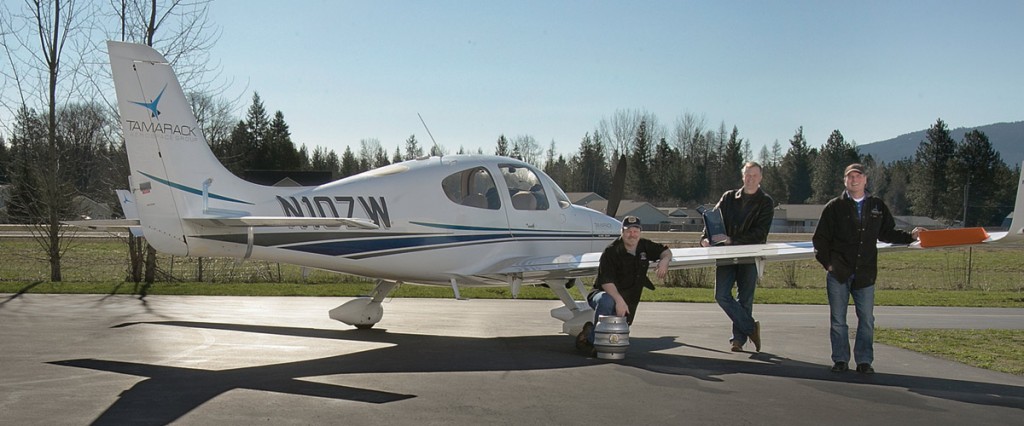
Story by Jennifer Lamont Leo, Photos by Marie-Dominique Verdier
Three Sandpoint entrepreneurs share their stories
Editor’s Note: This is the second story in a series
I
t takes a unique sort of courage – some might even say bravado – to run a business in tough times. In the face of a wobbly job market and bleak financial forecast, the temptation to hunker down and avoid taking risks is strong. Yet in recent years, an impressive number of Sandpointians have willingly rolled up their sleeves and set up shops of their own. Is there some special element found in northern Idaho’s heady mountain air, bracing blue water and towering firs that makes it a sizzling spot for start-ups?
Meet three ambitious, high-energy entrepreneurs who are making a meaningful contribution to the local economy, right here on the shores of Lake Pend Oreille, as their business markets stretch across the country and even overseas.
Jason Giddings: TransluSense Inc.

Jason Gidding, TransluSens Inc.
The tech industry was all abuzz last January when Sandpoint-based TransluSense – a scrappy David facing down technology Goliaths like Samsung – took first place in the prestigious Last Gadget Standing contest at the 2013 Consumer Electronics Show in Las Vegas.
“It captures people’s imagination and gets them jazzed,” said TransluSense founder, president and CEO Jason Giddings, 45, of the prizewinning device. He’s talking about the Luminae, a futuristic-looking, light-driven glass keyboard and touchpad. A clear cling-on overlay designates the keys and can be fully customized for the needs of specific industries, using software also supplied by TransluSense.
Giddings, a Spokane native and former Army helicopter pilot, earned a four-year degree in aerospace engineering from Embry-Riddle Aeronautical University in Prescott, Ariz. After a stint in Boise working on race airplanes, he worked at Davis Tool for seven years before founding Giddings Product Development in Forest Grove, Ore., to provide research and development services to small companies.
Fast forward to early 2012, when Giddings floated the idea for a light-driven input device to technology-oriented followers of the Kickstarter.com crowdfunding website. The idea soon caught on, went viral and attracted enough funding to make the project viable. Giddings had some decisions to make, and he had to make them quickly.
“My wife and I knew that if we were going to commit to a brick-and-mortar manufacturing facility, it had to be located somewhere we wanted to live,” Giddings said, “so we chose Sandpoint as a good place to build the company and raise our daughter.” He has many positive things to say not only about Sandpoint’s natural attributes but also about the support he’s received from state, city and county officials.
“Idaho is a good place for business,” he said, citing benefits ranging from tax incentives to assistance in finding an appropriate building. TransluSense set up shop in a former call center on the Coldwater Creek campus, where a sea of cubicles has been remodeled into a cavernous, uncluttered space housing state-of-the-art assembly equipment, flanked by a few small offices.
Giddings expects the Luminae to start shipping in August 2013. If all goes as planned, TransluSense will expand from its current five employees to a maximum of 130 employees by mid-2014, producing about 100,000 units per month.
“Initially, we’ll ramp up the assembly, shipping/receiving and packaging operations,” Giddings said. “Later, we’ll add positions in other areas, like finance and marketing.”
The next major product slated to roll out after the Luminae is a keyboard that self-sanitizes using ultraviolet light, for use in hospitals and other medical environments.
Giddings advises anyone with a bright business idea to first investigate Kickstarter, the world’s largest funding platform. “It’s a potential source of funding,” he said, “but it’s even more useful as a test bed where you can get good feedback. Blunt feedback,” he said, grimacing.
Giddings also feels it’s important to give back to the community. For example, TransluSense recently cosponsored a Sandpoint team in First Lego, a competition in which kids ages 9 to 14 use Lego® products to build robots. “The workforce of the future,” Giddings said. He meant the kids. And maybe even the robots.
For more information, visit www.translusense.com.
Nick Guida: Tamarack Aerospace Group, Inc.
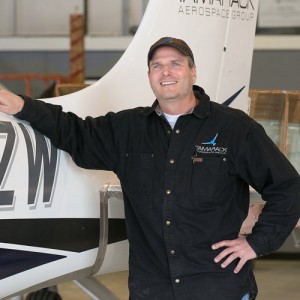
Nick Guida,Tamarack Aerospace, Inc.
From the outside the hangar is nondescript, with only a modest sign to distinguish it from its neighbors lining the runway at Sandpoint’s small airport. Inside, however, the large, open space hums with energy, a beehive of innovation in action. While mechanics work on planes, a team of engineers huddles in deep concentration over a bank of computers. Clearly, this is a place where serious work gets done.
Founder and chairman Nick Guida, 46, formed Tamarack Aerospace Group, Inc. (TAG) in 2010 to help airplane owners “get more out of their aviation investment,” according to the company’s mission statement. Tamarack develops supplemental type certificate (STC) products that are modifications for aircraft aimed at improving some aspect of the aircraft’s performance.
One example is an engine control modification for the Cirrus SR22 that returns manual control of the propeller RPM, allowing the pilot to reduce fuel burn and propeller noise. Most importantly, everything can be done in-house in a short time frame.
“We’re a one-stop shop for design, engineering and repairs,” Guida said. “Our job is to solve problems.”
A potential game-changer, however, is Tamarack’s patented Active Winglet™ that reduces drag and increases fuel efficiency (typical for a winglet) without requiring the usual extensive structural reinforcement (unique). Already approved for the Cessna CitationJet and the Cirrus SR22, the technology could revolutionize winglets for the entire aviation industry.
It would appear that Guida has jet fuel running through his veins. Growing up in Maryland, he developed an interest in aviation at an early age. At 16 he was flying and skydiving. After earning a degree in aeronautical engineering from Georgia Tech, his work as a consultant took him many places, including overseas. Eventually, a stint as chief engineer at Quest Aircraft landed Guida and his family in Sandpoint, where they opted to put down roots. He is also a Designated Engineering Representative, meaning he holds a special delegation from the Federal Aviation Administration to make official engineering findings for aircraft structural modifications and repairs, on behalf of the FAA.
Tamarack currently employs 15 full-time and two part-time employees, a mix of mechanics, engineers and IT professionals. According to an aviation industry website, the tough economy has slowed sales of new planes, meaning owners are more interested in improving their current planes. The forecast calls for blue skies ahead, as Guida sees the opportunities in aviation as virtually limitless.
“We’re getting some great traction with big-name aviation companies,” he said.
While he thinks Sandpoint is a great place to live and run a business, he admits there are a few challenges, such as needing a specialized pool of tech-savvy workers and accepting a moderate-to-high employee turnover rate.
“It’s tough to move to a beautiful area and then not have much time to spend outdoors because you’re putting in 16-hour days,” he said, “but that’s the nature of a start-up.”
On the plus side, Guida cites Sandpoint as a friendly place where it’s easy to get to know people.
“This area attracts an interesting breed of people,” he said, “helpful, creative, dedicated people with the entrepreneurial spirit.”
With fewer planes competing for runways and airspace, flight testing is also easy here, and the relatively isolated location helps keep proprietary technology private. “In a big city like Portland, everybody knows what you’re doing,” Guida said. He commends the cooperation of local city and county officials who “really want small business to succeed.”
“And you gotta love the ‘rush minute,’ ” he added.
Rush minute?
“Other places have a rush hour,” he said, grinning. “Sandpoint has a rush minute.”To learn more about TAG, visit www.tamarackaero.com.
Fred Colby: Laughing Dog Brewing
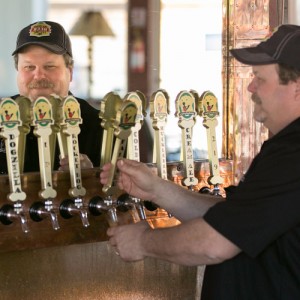
Fred Colby, Laughing Dog Brewery
First, the important stuff. Yes, there is a real dog behind Laughing Dog Brewing. His name is Ben and he’s a yellow Lab belonging to company founders, Fred and Michelle Colby. Like others of his breed, Ben appears to be constantly smiling. You would smile, too, if you got to spend most of your time in a cheerful place like Laughing Dog, which Ben gets to do. Dogs are welcome in the taproom, along with their humans.
Laughing Dog Brewing was founded in 2005, when executive brewer Fred Colby, 49, left a corporate job to pursue his interest in handcrafted beers. When asked why he and Michelle chose this location for Laughing Dog, Fred said, “It’s a beautiful area. I’m a Sandpoint native. Growing up here, I took it for granted. Now we really appreciate it.” He said Laughing Dog also receives “a ton of community support.” On the flip side, he mentioned that shipping product in and out of a small town can be a challenge, especially as the company grows. Also, he has needed to hire from outside the area to fill certain positions, like brewers.
“Brewing is a specialty,” he said. “People study and practice it for years.”
What advice does Colby have for fledgling entrepreneurs? “Make sure it’s what you really want to do,” he said, “and realize that sometimes the business owner comes last,” that is, in terms of paychecks and vacations.
In 2011 Laughing Dog moved from its former location to roomier premises on Fontaine Drive in Ponderay. “Even though we moved to a larger location, we’ve had to rent another warehouse,” said Colby, a testament to a robust business. Today, the company’s “Fetchingly Good” beers and ales are sold in 40 states, and Laughing Dog is the first Idaho brewery legally permitted to export to Canada. More than 15 different beers, many of them award-winning, are produced in the 15-barrel on-site brewery. Some of the brews are seasonal, like Huckleberry Cream Ale and Cold Nose Winter Ale, while others are produced year-round. A current favorite is Purebred A.P.A. Citra, a single-hop pale ale that showcases a variety of hop called Citra.
Laughing Dog Brewing also gives back to the community by sponsoring a range of worthy causes. This summer, as in the two previous years, “Team Laughing Dog” will participate in the annual Race Across America bicycling event. In 2013 the team will raise money for cystinosis research and awareness (see story, page 17).
“We also support the animal shelter,” Colby added. “We like to help out wherever we can.”
In 2012 Colby became a minority partner in a second brewery, the Belgian-themed Selkirk Abbey Brewing Company in Post Falls, Idaho, that celebrates its one-year anniversary with a special event June 29.
“Selkirk Abbey is my creative outlet, where I get to play with beers we don’t make at Laughing Dog,” he said. His good friend and business partner in Selkirk Abbey, Jeff Whitman, echoed Colby’s thoughts about why northern Idaho is a great place to make beer. “You can’t get better water for brewing,” he said, “along with the finest quality grain, hops and yeast.” Selkirk Abbey brews eight-barrel batches of five year-round and four seasonal brews.
Schedule a date night with your dog at Laughing Dog Brewing, 1109 Fontaine Drive, Ponderay, 263-9222, www.laughingdogbrewing.com. Summer hours are Monday-Saturday, 11 a.m. to 8 p.m., and Sunday, noon to 5 p.m. When you’re down in Post Falls, visit Selkirk Abbey, 6180 E. Seltice Way, 292-4901, www.selkirkabbey.com (call or check website for summer hours).
•••
While Guida, Giddings and Colby all appreciate Sandpoint’s natural beauty and matchless recreational opportunities, all three will attest that nothing replaces patience, planning and persistence when it comes to running a business, especially a start-up. Even though there’s no guaranteed formula for success, these entrepreneurs shared some common wisdom: Do what you enjoy, and take it seriously. Know your customers, build a top-notch team, harness the best technology and manage your resources wisely. Give back to the community. Begin with a real passion and a clear goal for what you want to accomplish. Take a step forward. See what you can learn from it. Take the next step. Patience. Planning. Persistence. And maybe a little northern Idaho magic.
Return of the WOLF
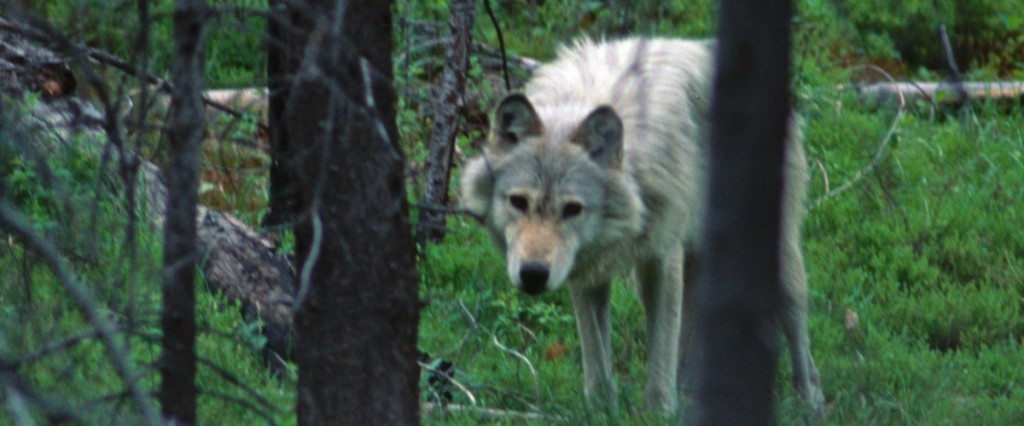
Alpha female, Chamberlain Basin pack. This wolf, B16, and her mate, B9, were captured in Canada, translocated to central Idaho in 1995 and formed one of the first documented breeding pairs
Story by Cate Huisman
Photos by Isaac Babcock
Once nearly eradicated, the predator has made a strong comeback. That’s thrilling for some – infuriating for others
Gary Finney fears he is losing a family tradition that he treasures. “Hunting was a big part of my life and my family’s life,” he says, “but my kids aren’t going to see the hunting opportunities I’ve had. Elk numbers are steadily declining, and they aren’t coming back. Wolves are primarily responsible, in my mind.”
Ann Sydow, in contrast, treasures the wolves whose numbers rose in Idaho but are now declining again. “Wolves are by far the most beneficial and the least dangerous of all the large predators,” she says, pointing out that there is far less animosity toward cougars and bears.
A wide range of feelings about the wolf is standard here in Idaho, although both its detractors and its admirers agree that the gray wolf, Canis lupus, represents a remarkable success story in species recovery. By the 1930s, wolves had been almost completely eradicated in the West. Their U.S. recovery began when they were placed on the Endangered Species List in 1974, and it accelerated when wolves imported from Canada were reintroduced to Yellowstone and central Idaho in 1995 and 1996..
‘An Elite Predator’
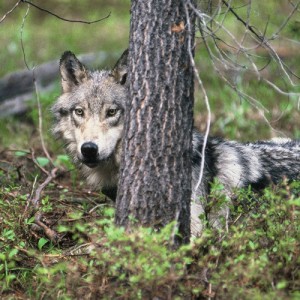
Female wolf B88 of the Chamberlain Basin pack in central Idaho
In the years since their reintroduction, wolves have multiplied and migrated into many areas of Idaho, Montana and Wyoming, more recently moving into Oregon and Washington as well. Their wide travel patterns and wariness of humans make them notoriously difficult to count, but Idaho Fish and Game (IFG) documents show a wolf population that peaked at 856 confirmed animals in 2009 and has since decreased to 683. Their advocates believe there were more than 1,000 wolves in Idaho, at least for a time.
Wolves have reestablished themselves successfully throughout the Northern Rockies for several reasons. “They’re an elite predator,” said IFG Conservation Officer Matt Haag. “They can make food out of anything they want to.” Reintroduced wolves entered a habitat from which they had been absent for 70 years. The wild ungulates that remained – deer, moose and elk – had multiplied in their absence. Plenty of these game animals existed for the wolves to prey upon, as well as the domestic animals they had originally been eradicated to protect.
Another reason for their success is their ability to spread out and procreate. “They can travel hundreds of miles to find a mate and establish a new pack and a new territory,” said IFG Habitat Biologist Brian Johnson. For years, scientists have been trapping wolves and outfitting them with radio collars for study. Johnson mentions one collared in Alberta that showed up in Colorado and another collared near Boise that was tracked to Saskatchewan.
The Panhandle Population
The Idaho Panhandle is one of the few places a remnant wolf population survived, or at least traveled through, during the 20th century. “There’s always been a few wolves in this area,” said Bill Lefebvre, whose family came to Boundary County in 1932. “We’ve seen their tracks but never one of them.”
Given wolves’ tendencies to travel, it’s reasonable to think that some of the wolves introduced down south have intermingled with our locals. But the panhandle population of wolves has been growing on its own ever since wolves were placed on the Endangered Species List. According to Wayne Wakkinen, a wildlife biologist with IFG, management activities in the 1940s, ’50s and ’60s kept wolf numbers down. But as the effects of listing took hold, populations started to recover, and packs started to grow in the 1990s. Currently there are several documented and suspected packs in the panhandle. Closest to Sandpoint is the Keokee Pack, likely only a few animals that inhabit the area west and north of town.
Wolves and Humans
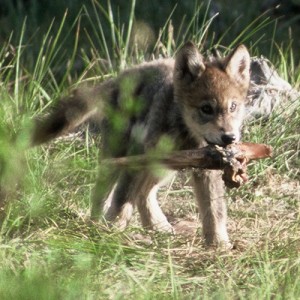
A 6-week old pup from the Landmark pack, central Idaho. At this age pups have often been moved from the den site to a rendezvous site – essentially a puppy playground for when the adults go on hunting forays
Panhandle visitors and residents are far more likely to hear howling or see tracks than to actually come upon wolves. When they do, reactions vary. “Wolves make a country feel truly wild,” said avid hiker Phil Hough, who sees their tracks regularly when he is hiking around Sandpoint but has not seen a wolf here. “Even not seeing them, their presence can really be felt.”
Fellow hiker Sandy Compton recalls an encounter high in the mountains, when he and his companions spotted a pack of wolves on a snowfield across a draw from their camp: “Then, all of a sudden, they drained off the snowfield into the timber, and about a minute later here they came, all of them, running right full tilt at us. They got about 100 yards away from us and then sheared off to the right. One stopped between two trees and stared at us, a really big guy, I imagine the alpha male, for about four heartbeats. The thing that I remember most was him standing there, and behind him these shadows just flitting through the woods.”
Hunters aren’t fond of wolves, but most will say they command respect. Ward Tollbom recalls how a pack of wolves added a little more excitement than preferred at the end of a day of family hunting: “My kids didn’t see them; they heard a pack of them howling in a spot where we were supposed to meet. It scared my daughter half to death. After dark, even with a rifle, she was spooked.”
The Management Controversy
As the wolf population has recovered, pressure has mounted to remove wolves from the Endangered Species List. Over the protests of a coalition of environmental and wildlife groups, Idaho wolves were removed, then replaced through a court order, and then removed again most recently on May 5, 2011. The second removal particularly galled wolf advocates, because the delisting was made through a budget rider – a legislative maneuver that had nothing to do with the merits of the arguments on either side. “It was the first time that a political move removed an animal from the Endangered Species List,” said Sydow, who works with the wolf advocacy group Northern Idaho Wolf Alliance to get the wolves back on the list.
Wolf management in Idaho is now under the control of IFG, which is managing wolves as they do other big game animals. The state has agreed with the U.S. Fish & Wildlife Service to maintain a population of at least 150 individuals and 15 breeding pairs.
Wolf supporters feel this number is far from adequate. “How can 150 wolves in 184,000 square miles of Idaho fulfill their role in the ecosystem?” asked Sydow. A further concern is that such a small population cannot possibly have enough genetic diversity to maintain a healthy population. Jim Hayden, IFG regional wildlife manager (see “Just the Wolf Facts, Please”), counters that wolves’ penchant for travel means Idaho’s population is constantly cross-breeding with out-of-state wolves: “We are talking not about 150 but about a total population of 50,000, part of the larger system of North American gray wolves.”
But skepticism persists. Suzanne Stone, of Defenders of Wildlife, has been studying wolves for 25 years. Her organization is not opposed to the hunting of any species that can sustain itself, but she questions the difference between the state’s management of wolves and its management of other large predator species. Mountain lions and bears, she says, are managed to maintain much larger populations. “Far more pressure has been applied to wolves, in an effort to significantly reduce the wolf population. This is a big contrast between how the state of Idaho manages wolves and how they manage other species,” she said.
Wakkinen and Haag both respond that a sustainable population of wolves is much smaller than that of bears or mountain lions. Black bears don’t give birth until they are four or five years old, and then they produce a pair of twins every other year. A mountain lion will have one or two kits every two years. In contrast, a female wolf, typically just the alpha female, starts reproducing by its second year and generates an average of four to five pups per litter every spring.
The Missing Elk
Hunters’ concern is that wolves are decimating the elk population, and it’s true that this number, as measured by what IFG calls the calf/cow ratio, or the number of elk calves per 100 elk cows, has fallen in some areas in recent years. While the ratio has remained at a healthy 30 or so in the northern panhandle, it has dropped into the teens in parts of the St. Joe and Coeur d’Alene drainages, where Finney hunts. As a result, hunters there have seen a 90 percent drop in hunting opportunities.
But wolves are only part of the issue for the elk in this region. A couple years of record snowfall recently have also depressed elk populations, as have habitat changes: Where the epic 1910 Fire cleared the landscape of trees a century ago, the brush that fills in first after a fire has supported increased elk populations for decades. Now, mature trees are starting to predominate again, and the preponderance of elk browse is dwindling.

Yellowstone’s Lamar Pack. Writes photographer Jerry Ferrara: “They had just gotten up after sleeping for several hours and were ‘greeting’ and making contact with each other, something they do regularly to maintain the social status of the pack. After nosing, rubbing and contact, they all trotted off probably to either hunt or to feed on a kill.”
Attempts at Coexistence
To support their efforts to regain protection for wolves, wolf advocacy groups are doing their best to prevent the problems with predation that led to the wolves’ eradication 70 years ago. Defenders of Wildlife is working with ranchers in the Wood River Valley of southern Idaho to develop practices that will lessen wolves’ attraction to their sheep, including the use of noisemakers, spotlights, night watchmen and “fladry” – flapping flags on strings like those at used car lots. Why fladry works is unknown, but it seems to keep the wolves wary and away from the herd, at least for a while.
This work has been valuable not just because it protects the sheep. Tourists who come to the valley, which is home to Sun Valley Resort, want to see the wolves. With tourism as important as ranching to the local economy, reaching a sheep/wolf détente is important for everyone.
There are few reports of such domestic animal depredation in the panhandle. “It’s not as much of an issue here as it is down south by any means,” Haag said. “They’re eating their natural prey and especially moose in winter.”
This is cold comfort to hunters. Some have organized to kill as many wolves as they can. The vehemence of their positions can be found on a variety of Facebook pages: “We want every wolf blasted!” and “Kill them ALL!” As hunting season opens, pro-wolf groups rally with equal vehemence and inflammatory language, decrying the state’s management plan: “It’s not management. It’s killing; it’s slaughter.”
To be fair, as with other controversies, the loudest and most strident voices get the most press but do not necessarily represent the majority of opinion holders. Despite their efforts to reduce the wolf population, ranchers and hunters agree that the wolves are never likely to go away completely. “Wolves are here to stay, there’s no doubt about it; it’s just a matter of trying to keep their numbers in balance with other animals,” said Coeur d’Alene hunter Rich Gerhard. And Compton, who was thrilled with his wolf encounter in the wild, nevertheless sees the necessity of a hunt: “I don’t know how they thought they could introduce them successfully and not have them managed by hunting,” he said.
The target number of 150 wolves remains controversial. As Sydow pointed out: “The wolf was out of the picture for 70 years. All of a sudden it’s back, and people don’t know what’s going to happen.” The wolves are not coming back to the same Idaho they left: Old-growth trees have been cut in some areas; new growth has filled in others; and far more people live now in remote areas that overlap with wildlife habitat.
Nevertheless, Wakkinen feels that resistance to hunting wolves may be dying down to a degree. “As we continue to have a harvest season on them and as we continue to show that wolves are at viable numbers throughout the state of Idaho, it takes the ammunition away,” he said.
At some point, if the wolf population stabilizes, and if wolf advocates believe the population is big enough, and if ranchers and hunters feel that livestock are protected and game populations are adequate, wolves could come to be considered just another predator – albeit the elite one – in the wild landscape of northern Idaho.
Just the wolf facts, please
With Jim Hayden, regional wildlife manager, Idaho Fish and Game
How much habitat do we have for wolves in northern Idaho?
We’ve got about 7,800 square miles total in the five northern counties. We’d expect to find wolves in about 80 percent of that. Some portion of the area is large lakes, urban areas and agricultural land, but the vast majority is available to wolves.
How many established packs and animals are here?
The number of packs in the annual report isn’t an estimate or an actual number; it’s what we’ve been able to document. So that number is a minimum number of packs. Based on the report, we’ve got 17 packs that are wholly contained in the panhandle, that are here almost all the time. An additional 14 packs spend at least a portion of their time in the panhandle. They may all be here, or none of them may. So, if you figure half of those are here at any given time, there should be at least 24 packs in the five northern counties at any given time. Undoubtedly there are some others that haven’t been around long enough to be noticed or otherwise documented. The number of wolves in a pack changes daily, but last year, the average summer pack size was 8.3 in the region. About 10 to 15 percent of the wolf population is not associated with a pack, so a conservative estimate for last summer would be 160 to 290 wolves in the panhandle.
Are wolves being reintroduced, or are they expanding here naturally?
Prior to the first transplantation of wolves into Idaho, there were already about 50 wolves nearby, about 60 miles to the east of Sandpoint, and an unknown number to our north in British Columbia and Alberta. The U.S. Fish & Wildlife transplanted about 35 wolves, but the nearest was introduced over 200 miles to the south. (Interestingly, the nearest source of the transplant stock – the wolves that were transplanted to Idaho – is only about 350 miles to our north.) So, the majority of the wolves in this area are likely walk-ins that expanded here naturally, but we assume the transplant did contribute to the wolf population in this area as well.
And is the species the same as was found here historically?
The wolf doesn’t lend itself to sub-speciation. The statement, “a wolf is a wolf is a wolf” is most accurate. What we have now is likely very much what we would have had without a transplant 200 miles to the south.
At what rate are their numbers projected to expand?
There are two different things going on here, and they’re moving in opposite directions. In terms of numbers of packs, 10 years ago we had two packs documented as denning in the panhandle, five years ago we had seven, and last year we had 20. So in terms of numbers of packs, they have increased in the panhandle and throughout Idaho. But the number of wolves has gone down because of hunting and trapping. The mean pack size is smaller than what it was before active management. Some of these packs are totally untouched, and others may be totally taken.
How many wolves were harvested this year?
There were 315 wolves harvested statewide during the past season compared to 377 a year ago. In the panhandle, the harvest of 71 wolves is about the same as a year ago (76). The lower harvest could be attributed to a variety of factors, including less interest in hunting and trapping this year, more wary wolves, fewer wolves, year-to-year fluctuations in weather conditions, and so forth. No doubt it’s some combination of all of the above.
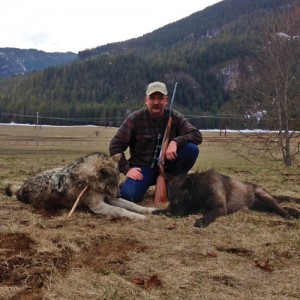
Wolves Harvested in Clark Fork, Spring 2013
Are deer, elk and moose populations up or down, and how much is due to wolves?
That’s the million-dollar question. What we look for is patterns. In Shoshone County near Avery, the elk population has gone down about 71 percent between 2006 and 2012. We have substantial concerns with moose as well, although probably fewer with white-tailed deer. In other areas farther west and adjacent to farmland, moose and elk populations are quite vibrant and increasing. When you add it all together, it may not look like much change is going on, but when you drill down a little to a smaller scale, some of the changes are huge.
Is culling of those herds by wolves harmful, or does it make them healthier?
Initially, if you have a herd without predation, you do have more old and sick animals. When wolves move into a system, that gets cleaned up pretty quickly. Then wolves choose from among healthy animals, and the result is just far fewer animals and only subtle differences between individuals. Certainly that’s been the case in the upper St. Joe and portions of the upper Coeur d’Alene rivers.
How many conflicts with domestic animals have been recorded?
There’s only one reported in the panhandle in 2012, and it’s usually less than five. People often don’t report dog/wolf conflicts. We don’t have a lot of livestock in this neck of the woods, so while conflicts here can be important, we haven’t yet seen a lot of this in the panhandle.
–Cate Huisman
Hello world!
Welcome to WordPress. This is your first post. Edit or delete it, then start blogging!
 Two natives capture what they love about life
Two natives capture what they love about life

















